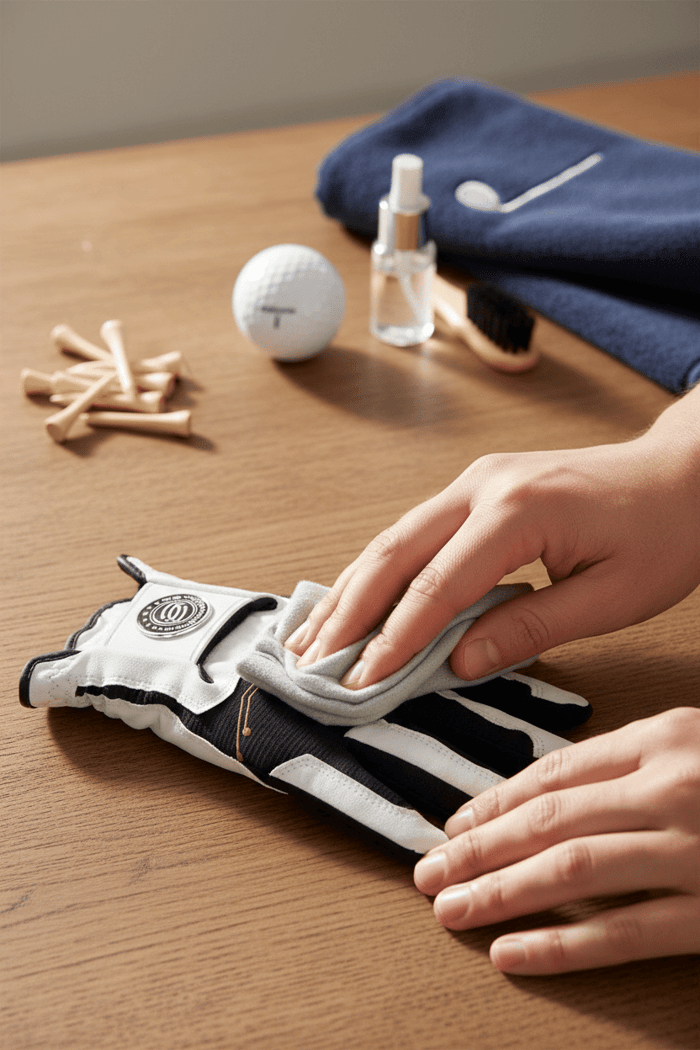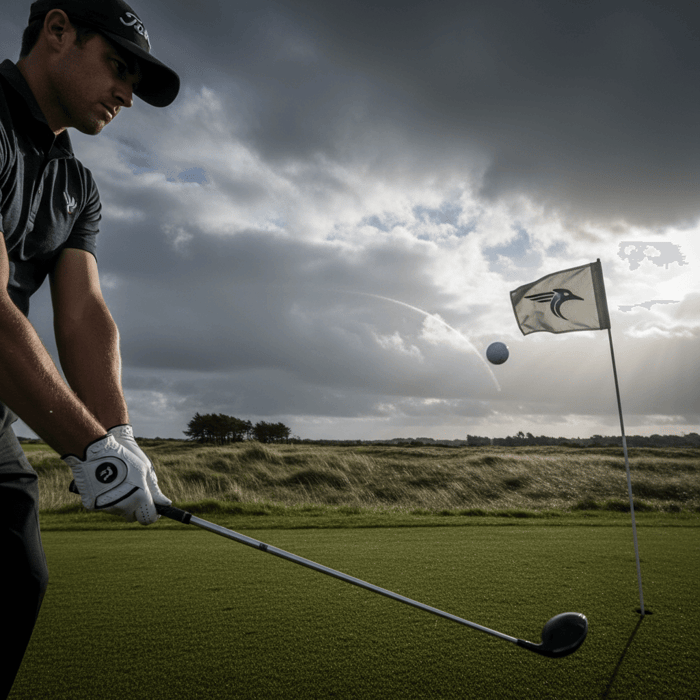Table of Contents
I’m going to tell you the real secret to golf longevity, and it’s not your driver.
It’s the glove you wear every single swing. If you think any old piece of leather will do, you’re missing the easiest way to prevent wrist, elbow, and forearm pain. Seriously. Ignoring your glove’s impact is the fastest way to get sidelined and into a physical therapist’s office.
For years, we’ve treated the golf glove like a simple barrier against blisters. That focus on basic skin protection has completely missed its potential as a powerful tool for injury prevention and joint support.
Choosing the right glove isn’t just about making sure the club doesn't twist. It's about protecting your body so you can chase that elusive low score—and enjoy the walk—for decades to come.
Why Golfing Puts Your Hands and Arms at Risk (The Pain Point)
Golf looks easy, but the swing is an aggressive, repetitive motion. The sheer force from coiling up and unleashing a powerful strike delivers a substantial shockwave right up your club and into your lead hand.
Do that for 80-100 swings a round, a couple of times a week, and you’re begging for trouble.
It All Comes Down to Too Much Grip Pressure
The number one mechanical issue that leads to upper-body injuries isn't a bad slice; it’s the white-knuckle death grip.
Most golfers instinctively "strangle the club" when they feel it might slip. This constant, high-tension squeeze wears out the muscles in the forearm and irritates the critical tendons that cross the wrist and elbow joints. That tension isn’t just killing your feel; it’s building toward a painful, chronic issue:
Golfer’s Elbow (Medial Epicondylitis): That familiar pain on the inside of the elbow, often caused by repeated forceful wrist flexion and, you guessed it, tight gripping.
Wrist Tendonitis: An inflamed lead wrist that absorbs too much impact shock because the muscles are too tense to act as shock absorbers.
Arthritis and Joint Pain: These conditions get dramatically worse when constant pressure is applied to already stiff or swollen joints.
If you’re compensating for a lack of confidence in your equipment by gripping tighter, you’re essentially hitting the fast-forward button on an injury.
The Cycle of Tightening Up (The Golfer's Struggle)
If you play regularly, you know this frustrating sequence: The club feels like it’s slipping—maybe you’re sweating, maybe your glove is wet, or maybe it’s just worn out. Your immediate, desperate reaction is to squeeze harder.
That squeeze feels like a temporary fix, but it locks your arms, kills your fluidity, and sets up a pattern of chronic strain.
The Problem with Most Gloves
A cheap, basic glove is fine for a beginner, but it quickly loses its tackiness, especially when the heat is on.
When a glove stops offering secure friction, it stops being a genuine tool for control. You have to make up the difference with your own muscles. This constant, forceful squeezing isn't just uncomfortable; it restricts the natural movement of your swing and transfers kinetic energy directly into joint stress.
I’ve seen golfers try everything to solve this: grip powders, carrying five different gloves, even using thicker grips. These workarounds are often messy or feel unnatural, leaving the core issue—the need for a low-tension, high-security grip—unsolved.
The Secret to Swinging Lighter and Longer (The Solution)
The only way to genuinely protect your joints and prevent injury is to make it possible to hold the club securely with the lowest possible tension. That’s where an advanced, specialized glove comes in. It takes the burden of securing the club off your forearm muscles and puts it onto the glove's engineered technology.
Advanced Materials are the Game Changer
If you want better injury prevention, look for gloves built with modern features that stabilize the clubface using minimal hand effort:
Superior, Non-Slip Tacky Surfaces: Look for specialized materials like silicone-webbing or tacky synthetics that stay grippy even when your hands are sweaty. This confidence lets you ease up on the pressure.
Form-Fit Compression: A great glove needs to fit perfectly. Compression fits gently support the tendons and muscles in the hand, promoting a relaxed, yet secure hold that helps circulation.
Better Feel: When you know the club isn’t going anywhere, you relax. A relaxed grip immediately gives you better feedback and control over the clubface.
How Compression Can Soothe Your Joints
For the countless golfers dealing with arthritis, carpal tunnel, or chronic tendonitis, mild compression is an excellent way to manage pain without pills or downtime.
A supportive glove acts like a therapeutic layer:
It helps keep muscles and joints warm, making them more flexible, especially first thing in the morning.
The gentle pressure can support blood flow, which may help reduce soreness and inflammation over the course of a long round.
The Longevity Advantage: Copper-Infused Gear
Specialized gloves—like those featuring Copper-Infused Compression Technology—are designed for serious players who want to swing pain-free well into their senior years. They address the physical fatigue that ends more golf careers than a bad case of the shanks.
The Copper Tech Golf Glove, for example, is specifically built to marry performance and physical support:
Pain-Relief Focus: The woven, copper-infused fabric provides the gentle, targeted compression that can help soothe the joint and muscle discomfort that often plagues older golfers.
Engineered for Low Tension: They use a proprietary non-slip grip technology. This means you can keep that feather-light hold you need for a fluid swing without worrying about the club twisting on impact.
Keeping the Dedicated Golfer on the Course (The Transformation)
When you make the switch to health-supportive equipment, you’re not just buying a glove; you’re investing in your longevity on the course:
Significantly Reduced Fatigue: Lower grip tension means your forearms don’t burn out on the back nine, allowing you to maintain clubhead speed and control all 18 holes.
Smoother Swing Mechanics: A relaxed grip encourages a natural, unforced release, which is the key to consistent, powerful ball striking.
Peace of Mind: You can worry less about a pain flare-up and focus on the pleasure of the game.
It’s time to retire the idea that your glove is a low-priority accessory. By choosing a glove engineered for both grip and physical support, you empower yourself to swing confidently, comfortably, and for many more seasons to come.
Ready to find out what a difference true support makes? Explore the Copper Tech Men’s Golf Glove collection and the Copper Tech Women’s Golf Glove collection and start swinging pain-free today.


.jpg)


